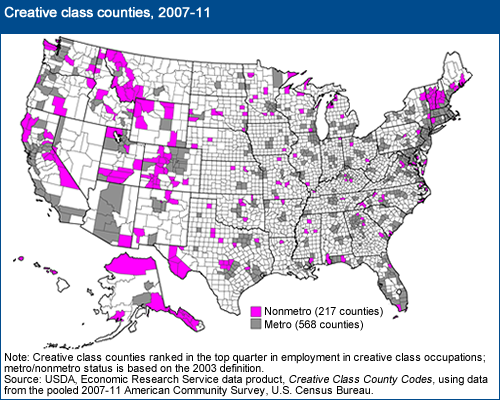Note: Updates to this data product are discontinued.
The creative class thesis—that towns need to attract engineers, architects, artists, and people in other creative occupations to compete in today's economy—may be particularly relevant to rural communities, which tend to lose much of their talent when young adults leave. The ERS creative class codes indicate a county's share of population employed in occupations that require "thinking creatively." Variables used to construct the ERS creative class measure include number and percent employed in creative class occupations and a metro/nonmetro indicator for all counties, 1990, 2000, and 2007-11. A break-out of employment in the arts is included.

